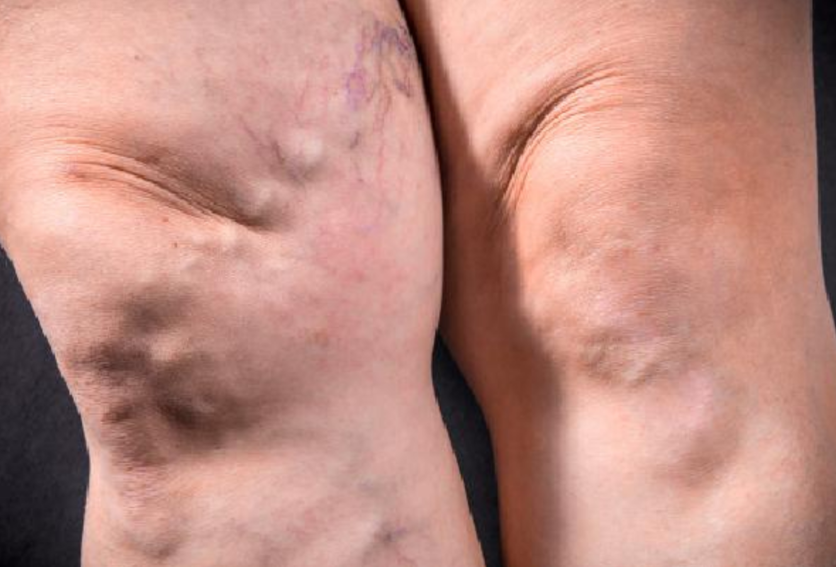
This Weather Change Is Affecting Your Arthritis… See More
You feel it before you see it—that familiar ache in your knees as rain clouds gather, the stiffness in your fingers when temperatures drop, the throbbing in your lower back when humidity rises. For millions of Americans living with arthritis, weather changes aren’t just something they watch on the news—they’re something they feel in their bones, quite literally. But is this connection between weather and joint pain real, or is it just an old wives’ tale? Science now confirms what arthritis sufferers have known for generations: weather absolutely affects joint pain, and understanding this connection could help you better manage your discomfort.
The relationship between weather and arthritis symptoms isn’t simple superstition—it’s grounded in atmospheric science and human physiology. As barometric pressure drops before rain or storms, the tissues and fluids around your joints expand slightly, pressing on already inflamed nerves and causing increased pain. This pressure change affects particularly sensitive areas where arthritis has already caused damage or inflammation.
Temperature changes also play a significant role. Cold weather causes blood vessels to constrict, reducing blood flow to extremities and making joints feel stiffer and more painful. This is why many people experience increased discomfort during winter months or even when moving between air-conditioned buildings and summer heat. Conversely, heat can help relax muscles and improve circulation—which is why heating pads and warm baths often provide relief.
Humidity—the amount of moisture in the air—affects arthritis sufferers in multiple ways. High humidity often accompanies changes in barometric pressure, doubling the impact on sensitive joints. Additionally, humid conditions can make people feel generally uncomfortable and fatigued, which may lower their pain threshold and make arthritis symptoms feel more intense.
For those with rheumatoid arthritis, weather-related changes can be particularly pronounced. This autoimmune condition causes inflammation of the joint lining, making affected areas especially sensitive to pressure changes. Many people with rheumatoid arthritis report being able to predict weather changes better than meteorologists based on their symptom fluctuations.
Osteoarthritis patients notice weather effects too. As cartilage wears down, bones become less cushioned and more sensitive to pressure changes. The nerves in exposed bone endings react to atmospheric changes, sending pain signals that vary with weather conditions.
Your location dramatically influences how weather affects your arthritis. People living in humid climates like Florida or Louisiana may struggle with different weather-related symptoms than those in dry, high-altitude areas like Colorado or Arizona. Some people find their arthritis improves when they move to a different climate, though others discover they’ve simply traded one set of weather challenges for another.
The seasons bring their own distinct arthritis challenges. Winter often means increased stiffness and pain due to cold temperatures and atmospheric pressure changes associated with winter storms. Spring brings unpredictable weather patterns with rapid pressure changes that can trigger flare-ups. Summer heat and humidity can cause swelling and discomfort, while fall’s dropping temperatures and rising dampness create their own unique challenges.
While you can’t control the weather, you can control how you respond to it. Dressing appropriately for temperature changes—wearing layers in cold weather, breathable fabrics in heat—can help moderate your body’s response to weather shifts. Staying active indoors during extreme weather maintains joint flexibility without exposing yourself to uncomfortable conditions.
Monitoring weather forecasts allows you to anticipate challenging days and plan accordingly. You might schedule more demanding activities for days when stable weather is predicted and save restful activities for days when weather changes might increase your discomfort. Using assistive devices like canes or braces on predicted high-pain days can help you stay mobile while reducing joint stress.
Environmental controls within your home can make a significant difference. Maintaining consistent indoor temperature and humidity levels helps minimize weather-related symptom fluctuations. Using a dehumidifier during humid months and a humidifier during dry winter months can create a more joint-friendly environment indoors regardless of outdoor conditions.
Understanding the weather-arthritis connection empowers you to take proactive steps rather than simply reacting to pain. By recognizing patterns in how different weather conditions affect your symptoms, you can develop personalized strategies that help you maintain your activity level and quality of life regardless of what’s happening outside your window.